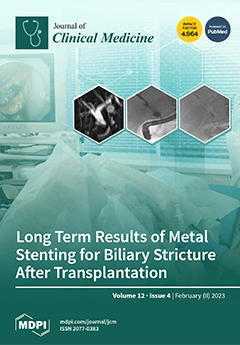J. Clin. Med., Volume 12, Issue 4 (February-2 2023) – 462 articles
Anastomotic biliary stricture is a well-known complication of liver transplantation. Management relies on endoscopic stenting, usually with metal stent placement. Long-term data are lacking, especially in the setting of deceased donor liver transplantation. The goal of this study was to evaluate the long-term outcomes of endoscopic management of anastomotic biliary stricture using metal stenting in this setting.
In this cohort study including 41 patients with a mean follow up of 6.9 years, metal stenting was technically successful in 95.1% of cases. Endoscopic treatment failed in 22.0% of patients, most of which had a successful subsequent surgery. Metal stenting of biliary anastomotic stricture provides satisfactory long-term results. View this paper
- Issues are regarded as officially published after their release is announced to the table of contents alert mailing list.
- You may sign up for e-mail alerts to receive table of contents of newly released issues.
- PDF is the official format for papers published in both, html and pdf forms. To view the papers in pdf format, click on the "PDF Full-text" link, and use the free Adobe Reader to open them.






